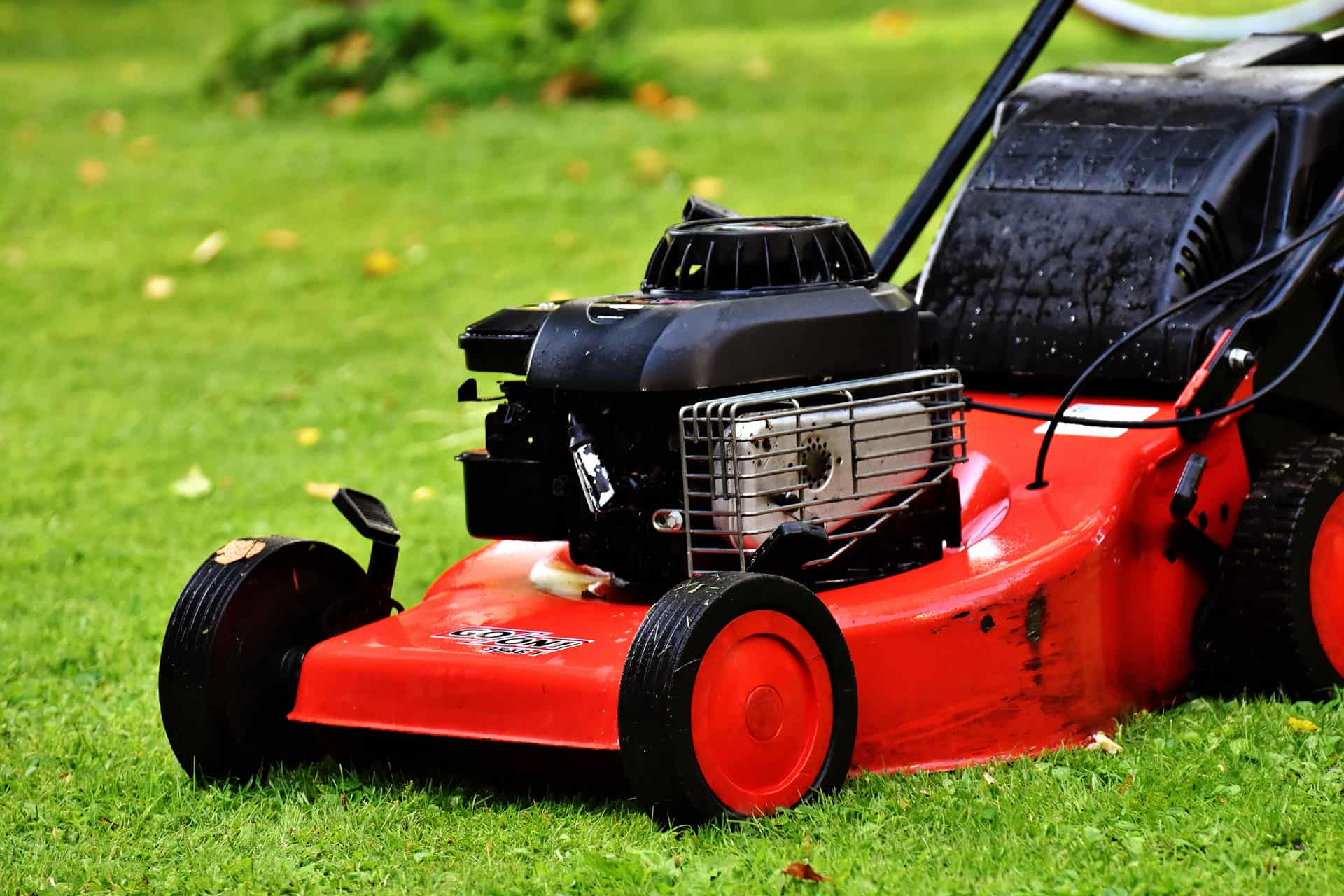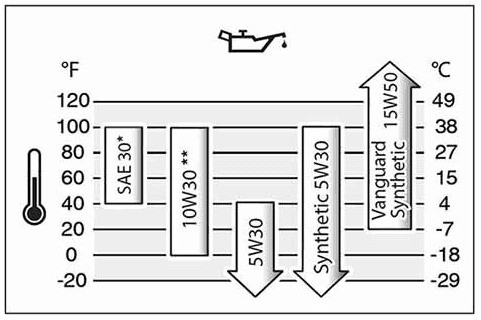Amazon has put together some great Home Gift Deals – save money and get your shopping done at the comfort of your home! Click here to see deals on Amazon
A gas-powered lawn mower is reliable, lightweight, and packed with lots of features. It’s a handy gardening tool for medium to large size yards and makes your yard look the best.
However, the gas mower needs a regular oil change. If you’re wondering how much oil does a lawnmower take? Then it depends on the engine in the mower.
Most residential walk-behind lawnmower needs anywhere 15 to 20 ounces of engine oil, whereas riding mower needs 48 to 64 ounces of oil.
Below we’ll answer most in-depth questions about the oil used in gas lawnmowers to maintain it properly.
What Motor Oil to Use in the Lawnmower?
Knowing which oil works best for your lawnmower is essential to maintain a fuel-efficient, low smoke, and long-lasting lawnmower.
The lawnmower, a riding lawnmower, or walk-behind lawnmower, isn’t a cheap gardening tool. You have to use the right kind of oil to keep the engine in good running order.
The oil depends on the engine type, and external factors such as the climate you live in, how often you use it, and the age of the mower.
The gas engine used in lawnmowers comes in two types, the two-cycle engine, and the four-cycle engine. In most lawnmowers, you will find a two-cycle engine while some commercial-grade lawnmower comes with a four-cycle engine.
Many lawnmower manufacturers use third-party engines from Honda, Briggs & Stratton, Kohler, Tecumseh, and several others. The engine specification and the recommended oil are mostly printed on the engine.
The modern lawnmower engine is fuel-efficient and sturdier than the old model engines. Generally, the newer gas engines use 10W30 multi-grade oil, whereas the older-style engine uses SAE30 oils.
What kind of oil to use in a lawnmower?
There are four main types of oil.
Full Synthetic Oil
The full synthetic oil is great for engines used in high-performance lawnmowers such as commercial-grade mowers to cut sturdy and thick grass.
The engine needs to generate much power and requires a high level of lubrication. The benefit of full synthetic oil is many.
It provides high viscosity and better lubrication to the engine, including resistance to oxidation and thermal breakdown. It improves fuel efficiency and reduces the engine drag while lowering the oil sludge.
But it’s usually more expensive than the regular oil and recommended to use if you live in an extremely hot or cold environment.
If the price isn’t an issue, then you can also use it in older engines as it prevents the buildup of sludge.
Synthetic Blend Oil
Synthetic blend oil provides engine protection without the higher cost of full synthetic oil.
It’s called bled oil is because it’s a mixture of full synthetic and regular base oil with oxidant resistance additives. You can use it in engines that operate in low temperatures.
It offers the middle ground to gardeners who want the high performance and engine protection of synthetic oil without spending too much on going full synthetic oil for their lawnmower.
Single Grade Oil
Single grade oil such as SAE 30 is used in two-stroke engine types. The Society of Automotive Engineers (SAE) classifies the oil grade level. One of the critical aspects of lawnmower oil is its viscosity.
For SAE classification, the oil is heated at 100 degrees Celsius then flows through a standard-size tube. It’s timed in seconds to find out how long it takes the oil to reach from one point to another then rounded to the nearest 10. It’s known as weight.
The SAE 30 means 30 weight oil, and it means the oil viscosity is as such that it takes 30 seconds to flow from one point to another. The higher the thickness, the higher rating of the oil.
Multi Grade Oil
Most modern engines use multi-grade oil. It helps protect it from a large temperature swing. If you use a single-grade oil, you have to change the oil depending on the outside temperature.
It’s necessary as oil changes its viscosity when there is a change in the temperature. The single grade oil viscosity is measured at 100 degrees Celsius temperature. But as the temperature drops, it reduces the protection offered to the engine.
The multi-grade oil use polymer additives to provide better viscosity at a lower temperature while maintaining the required thickness at a higher temperature.
When you’re looking at multi-grade oil, it contains two digits. For example, 10W-40 oil means 40-grade oil thickness at a higher temperature of 100 degrees Celsius, and 10 W means Winter grade performance at low temperature.
Generally, the multi-grade oil is thin at a lower temperature that making it easy to start. As the temperature rises, the oil begins to thicken to give better lubrication to the engine.
Most lawnmowers use single-grade oil due to limited use during the summertime and less extraneous condition.

Additives In Motor Oil
The lawn motor oil contains additives that improve engine performance anywhere from 5% to 30%. There are several types of additives used in oil, but some of the most common ones are:
Antioxidants: It slows the oxidation process inside the engine and reduces the formation of deposits in oil. The lower deposits inside the engine maintain the engine running cleanly while extending the life of the oil.
Dispersants: It allows the oil to absorb and hold solid contaminants inside the engine that prevents the engine from getting damaged or ceased.
Friction Modifiers: The friction modifier additive reduces the friction inside the engine at high temperatures and loads. It happens when you mow at a slope or cut sturdier and thick grasses. The low friction inside the engine improves performance and increases fuel efficiency.
Rust and corrosion inhibitors: The lawnmower gets consistently exposed to moisture and acidity that makes inside the engine rust and corrode. The rust and corrosion inhibitor added in the oil reduces the risk of corrosion and improves the efficiency and life of the lawnmower engine.
Anti-wear additive agents: The anti-wear additive agents protect the engine when operating at high temperatures and handling tough mowing jobs.
At full load and high temperature, the inside of engines such as cylinder walls, piston rings, lifters, and the cam become susceptible to damage.
The anti-wear agents form a thin protective coating around these essential parts of the engine to reduce friction between metals.
Motor Oil And Temperature
The oil performance is significantly affected by the temperature. Use the following chart to know which oil to use depending on the temperature.
40 Degrees F to 100 degrees F (4 C — 38 C): Warm temperature. Use single grade SAE 30 that is suitable for most small engine types of lawnmower. If the temperature goes below the operating range, then it may become difficult to start the engine.
0 degree F to 100 F (-18 C to 38 C): Varying temperature range. Helps the lawnmower to start even at a low temperature but increases the oil consumption above 80 F (27 C). You may use SAE 10W-30 multi-grade oil.
40 F to -20 F (4 C to -29 C): Best protection at low-temperature range with improved starting and low oil consumption. Use SAE 5W-30 multi-grade oil.
100 F to below -20 F (38 C to -29 C): Best for varying temperature ranges. Use Synthetic SAE 5W-30.
20 F to above 120 F (-7 C to above 49 C): Best for medium-low to the high-temperature range. Recommended for a commercial lawnmower for continuous long mowing. Use Vanguard Synthetic 15W-50 oil.
When using a lawnmower, use high-quality detergent oil additives. These oils can be classified as for Service SF, SG, SH, SJ, or higher. You don’t need to use any other special additives.
What happens if you don’t change the oil in the lawnmower?
Gas engines regularly require an oil change after a specific duration. It’s the same as your car that you have a manufacturer-recommended oil change schedule after every 5,000 kilometers. The same rule applies to the engine in the lawnmower.
The primary purpose of oil in lawnmowers is to keep the engine running smoothly. It lubricates the engine and flushes the waste away from the burning fuel inside the engine.
The oil inside the engine circulates through several small parts and holes to run with reduced friction and lower the temperature inside.
The movement of oil inside the engine makes the oil pick dirt and debris created due to combustion and friction. It keeps the engine clean, but as time goes by, the oil becomes too dirty to remain effective, and you have to change the oil.
But if you don’t change the lawn mower oil regularly, then after a while, the engine becomes less efficient and starts getting too hot. Overheated engines may cause damage to the internal parts, especially to the piston and the filters.
An entirely ceased engine may cause the motor not to start at all, and depending on the damage, you may have to replace several internal parts.
The repairing of the engine and changing parts may not be cheap, and you may have to either replace the engine or buy a new lawnmower.
This is why regularly changing lawn mower oil is the cheapest and most effective way to maintain your lawnmower engine.
How many Quarts or Oz of oil does a lawnmower take
If you’re wondering how much oil does a lawnmower take? The amount of oil depends on the lawnmower’s type and its engine size.
Walk-Behind Lawnmower oil capacity: 15 to 18 Oz (0.47 qt to 0.56 qt), and you have to change the oil every 50 hours or annually, whichever comes first.
Riding Lawnmower oil capacity: 48 to 64 Oz (1.5 qt to 2 qt), and change oil every 100 hours or annually, whichever comes first.
When filling the oil, make sure you don’t overfill it. The recommended oil change interval depends on the engine type, and you may have to consult the manufacturer manual to find out their suggested oil change schedule.
Here are some standard lawnmower engines and the amount of oil it takes.
| Brand | Lawn Mower Oil |
|---|---|
| Honda Lawn Mower Engine (GCV 160/190) | 18 Oz |
| Briggs and Stratton Riding Mower engine | 18 Oz (1000 series), 48 Oz (Single cylinder, power built, professional series, 64 Oz (Commercial engine, V-Twin) |
| Husqvarna Lawnmower engine oil capacity | 20 Oz |
| Toro 6.5 hp (1900 cc) lawnmower oil capacity | 16 Oz |
| Tecumseh lawnmower oil capacity | 19 oz to 64 Oz |
| John Deere lawn mower oil capacity | 48 Oz |
| Lawn Boy 6.5 149 cc oil capacity | 20 Oz |
| Troy Bilt TB230 oil capacity | 20 Oz |
| Craftsman 6.5 lawnmower oil capacity | 20 Oz |
How long does oil last in a lawnmower
If you’re regularly using the lawnmower, then you must frequently change the oil as per the manufacturer’s schedule. But the shelf life of conventional motor oil is around five years.
The time depends on the additives used in the oil and the storage condition of the oil. Generally, you should change the oil annually.
Usually, it’s not the oil that goes bad, but it’s the additives inside it that have a limited shelf life. The most common additives are dispersants, detergents, oxidation inhibitors, and calcium additives that provide specific characteristics to the lawnmower oil.
The shelf life of these additives depends on the storage condition of the oil and the temperature. The optimum temperature to store the lawnmower oil is between 40 degrees F and 85 degrees F.
Operating at a shallow temperature or high temperature may affect the stability and efficiency of the oil.
Also, prevent the humidity or moisture from contaminating the lawnmower’s oil as it causes condensation inside it. These water particles react with the oil and form insoluble parts such as sludge.
If you have oil that remained unopened, store it in a cool and dry place to keep it stable for a longer duration.
Can you just add oil to your lawnmower
Motor oil is the lifeblood of your engine as it helps lubricate the internal parts to make it run smoothly and efficiently.
As stated earlier, you have to change the oil at regular intervals to maintain it properly. Usually, adding new oil to the existing oil isn’t recommended.
You can use the dipper to check the oil level, and as long as it doesn’t go below the lowest-level mark or time to change the oil, then you don’t need to do anything.
If you have a low oil because of oil leakage and the oil the relatively new, then you can top it up to bring it back to the normal level. However, except in those limited scenarios, you shouldn’t add new oil to the old oil.
It’s because as oil circulates inside the engine, the high temperature inside changes the properties of the oil. The oil starts losing its lubricating properties and starts to get dirty due to fuel combustion and wear and tear inside the engine parts.
The purpose of a lawnmower oil change is to get rid of old and dirty oil and fill it with fresh and effective lubricating oil. Topping up new oil to old and dirty oil won’t get rid of slugs and dirt already in the oil.
Can you use car oil for a lawnmower
For most lawnmowers, you can use SAE 30 motor oil, but for a better result, you should always check the manufacturer’s recommendations for the oil. You can use car oil for the lawnmower engine as long as it’s the same grade oil.
Most often, if you have bought Synthetic 10W-30 or 10W-40 oil that is suitable to operate at a wide temperature range to use in the car and have leftovers, you can safely use it for the lawnmower engine as well.
If you use the lawnmower in an extremely dusty environment, then you should also consider changing the oil. Always drain the oil before filling up the lawnmower oil with vehicle oil.
How can you change the lawnmower oil
Before you start changing the lawnmower oil, you should check the manual to determine the oil capacity. If you don’t have a manual, then you can use a dipstick to check the amount of oil needed.
Safety is essential when changing the oil and make sure the lawnmower is turned off for a couple of hours at least to get the engine to cool down. To get started, you should empty the gasoline from the mower’s fuel tank and disconnect the spark plug.
This safety precaution is essential to prevent any accidental fire or spillage of gasoline. Once you’re ready, follow these steps:
Step 1: You have to drain the existing oil. Place the lawnmower flat on the ground and find out the engine oil cap.
Then remove the dipstick from the engine and check the amount of oil level. You should wipe the dipstick with a clean, dry cloth and recheck the oil level.
Step 2: Tilt the mower to one side to drain the oil into a tray. If your mower had a dedicated oil drain plug, then open it to remove oil.
Never drain the oil into the water sewer as it could harm the environment and may be illegal. Follow the proper disposal process as per your local bylaws.
It’s usually helpful to drain the old oil in a big tray then pour it in an oil bottle to dispose of it safely later.
Step 3: Use a funnel to fill the oil in the tank. If you know the maximum capacity of oil to fill, then you can measure the oil and fill the tank without stopping.
But if you don’t know how much oil your lawnmower takes, then fill it and use the dipstick to check the oil level. The dipstick will have a lower mark (L) and a higher mark (H). Try to fill it, so the oil is between those marks.
Step 4: Recheck the oil level with a dipstick and make sure you don’t overfill the engine as it may cause oil leaks or produce white smoke when you start the engine.
Step 5: Insert the dipstick in its place and close the lid or cap. Make sure there is no spillage of the oil on the lawnmower. You can then refill the gasoline and refit the spark plug to get ready for mowing.
What can you do if you put too much oil in the lawnmower?
People often wonder if overfilling an engine with oil is worse than slightly underfilling it. You should always strive to maintain the correct level of oil inside the engine.
The oil sits in the bottom reservoir when not in use, and the engine pump circulates it when it starts. The oil falls back into the chamber due to gravity as the engine stops.
The overfilling of oil causes the rotating part of the engine to contact the oil reservoir and start pulling it up with it as the crankshaft moves.
This constant contact and beating of the oil with moving engine parts make the oil aerate and foamy. It reduces the flow of the liquid, and the oil doesn’t reach all other needed parts of the engine.
But don’t worry if you overfill it. You can always remove the excess oil through the drainage hole or buy the oil extraction pump for a cleaner and simple way to evacuate and dispense the oil. Use a dipstick to check the correct oil level inside the engine.
What does it mean if a lawnmower is burning oil?
The gas engine works by passing the gasoline into the combustion chamber then burning it inside the chamber to generate power to move the piston.
The combustion chamber is sealed to prevent any leakage. But sometimes due to faulty and worn out seals, valve stems, and piston rings, the oil may seep into the combustion chamber and get burned.
Depending on the engine, the small burning of oil may be normal. But excessive burning of oil produces thick blue smoke.
You can use the dipstick to check if the oil level is going down to estimate the burning. If you get non-stop, blue smoke coming out from the lawnmower engine, then you may need to check if it’s overfilled. You may have to do some tune-up to make sure proper fuel mixture is used.
If there is any significant internal damage to the engine such as crack or tear in the seals, then you may have to bring a lawnmower to the repair shop.
Why is oil coming out of lawnmower exhaust?
The likely reason for oil to be coming out of lawnmower exhaust is due to the worn-out or damaged piston. It happens due to the piston pushing out excess oil without burning it.
There may be several reasons for oil to be seeping into the piston. It could be as simple as storing the engine on the side that results in oil to be leaking inside the combustion chamber.
If that’s the case, then you don’t have to worry much about it. The oil seeping from the exhaust stops when the chamber gets dry.
But if you have consistent oil leaking from the exhaust, then it means there may be some damage inside the engine that is causing the oil to be leaking in the combustion chamber. You have to bring the lawnmower to the mechanic to get it fixed.
Why is lawnmower blowing out white smoke?
There isn’t much to worry about if you see white smoke blowing from the lawnmower engine. It’s more likely due to the burning of condensation buildup inside the exhaust system of the lawnmower.
Usually, the white smoke should go away after letting the engine run for a couple of minutes. However, if you see a thick bloom of white smoke from lawnmower exhaust, then it may be a serious issue and need to be looked at.
The most common reason for thick white smoke is due to the engine burning coolant. The coolant gets inside the combustion chamber due to severe damage inside the engine, such as a blown head gasket, cracked engine block, or damaged cylinder head.
Usually, the symptoms of the blown head gasket in a lawnmower is the generation of thick white smoke coming from the exhaust. You shouldn’t run the engine and immediately turn it off and get it checked by a mechanic.

Don’t forget to share this post








